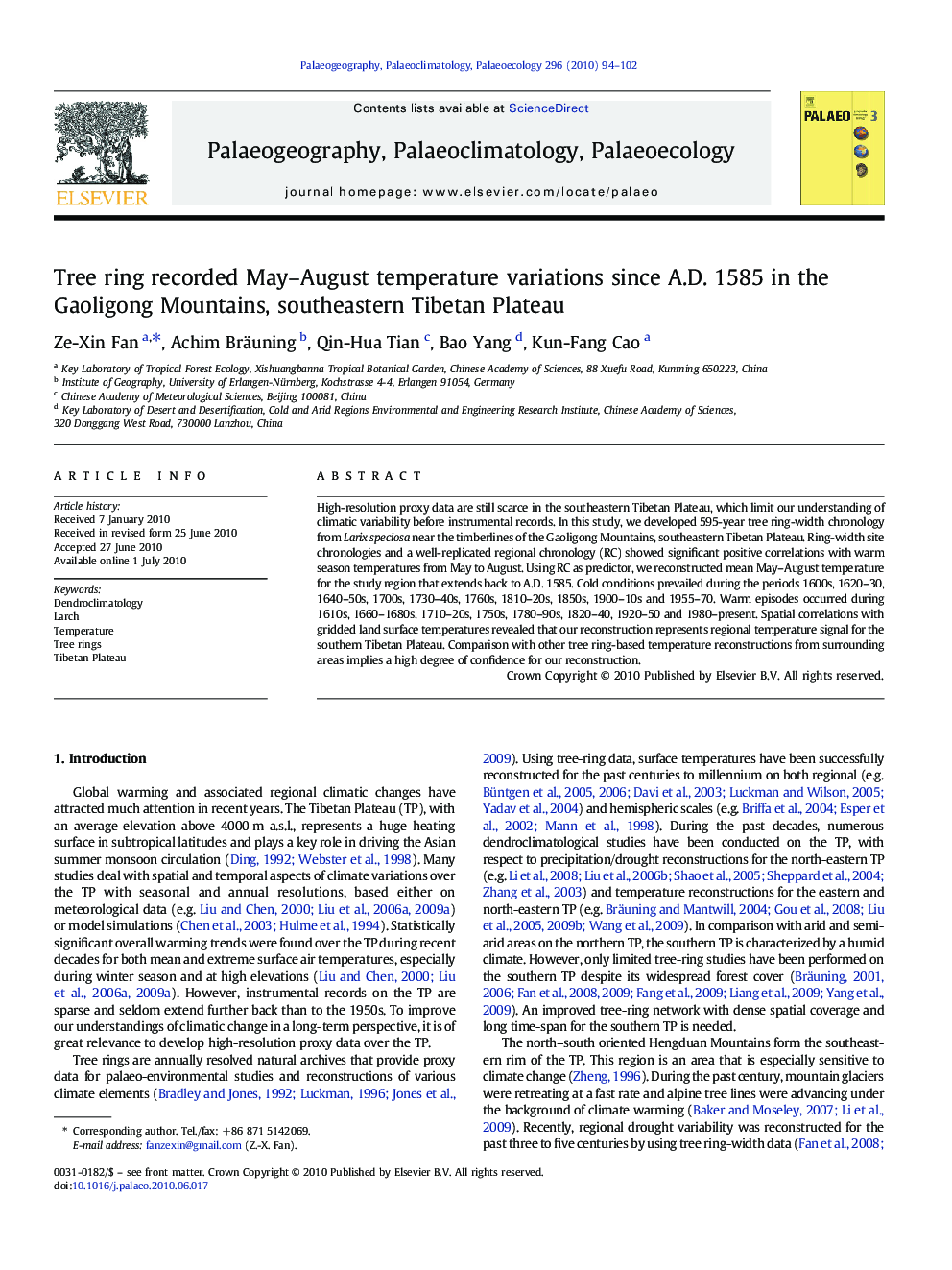| Article ID | Journal | Published Year | Pages | File Type |
|---|---|---|---|---|
| 4467657 | Palaeogeography, Palaeoclimatology, Palaeoecology | 2010 | 9 Pages |
High-resolution proxy data are still scarce in the southeastern Tibetan Plateau, which limit our understanding of climatic variability before instrumental records. In this study, we developed 595-year tree ring-width chronology from Larix speciosa near the timberlines of the Gaoligong Mountains, southeastern Tibetan Plateau. Ring-width site chronologies and a well-replicated regional chronology (RC) showed significant positive correlations with warm season temperatures from May to August. Using RC as predictor, we reconstructed mean May–August temperature for the study region that extends back to A.D. 1585. Cold conditions prevailed during the periods 1600s, 1620–30, 1640–50s, 1700s, 1730–40s, 1760s, 1810–20s, 1850s, 1900–10s and 1955–70. Warm episodes occurred during 1610s, 1660–1680s, 1710–20s, 1750s, 1780–90s, 1820–40, 1920–50 and 1980–present. Spatial correlations with gridded land surface temperatures revealed that our reconstruction represents regional temperature signal for the southern Tibetan Plateau. Comparison with other tree ring-based temperature reconstructions from surrounding areas implies a high degree of confidence for our reconstruction.
